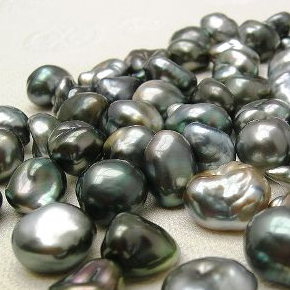Keshi pearls
it is rare to find pearl oysters outside of cultivation and is very rare, then, to find a pearl that meets the requirements of sphericity and quality expected by the market.
However there is one exception.
The pearls of the sea "Keshi".
Sometimes, indeed quite frequently, in oysters grown in fields perliferi, accidentally tiny foreign bodies enter in oyster . The mollusk covers the foreign body in a "sack" and that, most likely, will evolve into a pearl born spontaneously.
In the early days of the collections of pearls, the Japanese found inside oysters these tiny pearl which they called "Keshi" which in their language means "Poppy" with the obvious reference to poppy seed and its small size.
The phenomenon is also repeated in the oysters grown in the South Seas.
Since the size of these molluscs is much larger than those grown in Japan, Keshi pearls also take on much larger dimensions, between 4 and 8 millimetres; the larger ones are much rarer.
Keshi are "baroque", almost never spherical and with a wide variety of shapes and colors.
Between the 80s and 90s, China began to produce freshwater pearls very similar to Keshi, and to place them on the market in considerable quantities, thus decreasing interest in other productions.

Specie di mollosco bivalve utilizzati nelle coltivazioni mondiali.
Giappone - pearls Akoya; clam "Pinctada Fucata Martensii", size cm 8 - 13.
Australia: clam Pinctada Maxima, size up to cm 30.
Tahiti: clam Pinctada Margaritifera, size up to cm 30.
Golfo di California: clam Pinctada Mazatlanica, size less than cm 20; clam Pteria Sterna, size less than cm 13.
